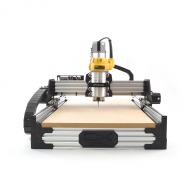ooznest OX CNC Machine
Discussion in 'CNC Mills/Routers' started by Ryan Lock, Apr 28, 2015.
Ooznest OX CNC Machine
Discussion in 'CNC Mills/Routers' started by Ryan Lock, Apr 28, 2015.
The Ooznest OX CNC Machine Kit is based on the OX CNC Machine designed by Mark Carew, and it incorporates many upgrades from this community. The plate designs in our kit are based on the originals. However we have added our own touches to increase the performance and design of the machine. To complement Mark's build videos, we have made a complete written instruction manual, with IKEA'eske assembly diagrams.
Page 27 of 38
Page 27 of 38
